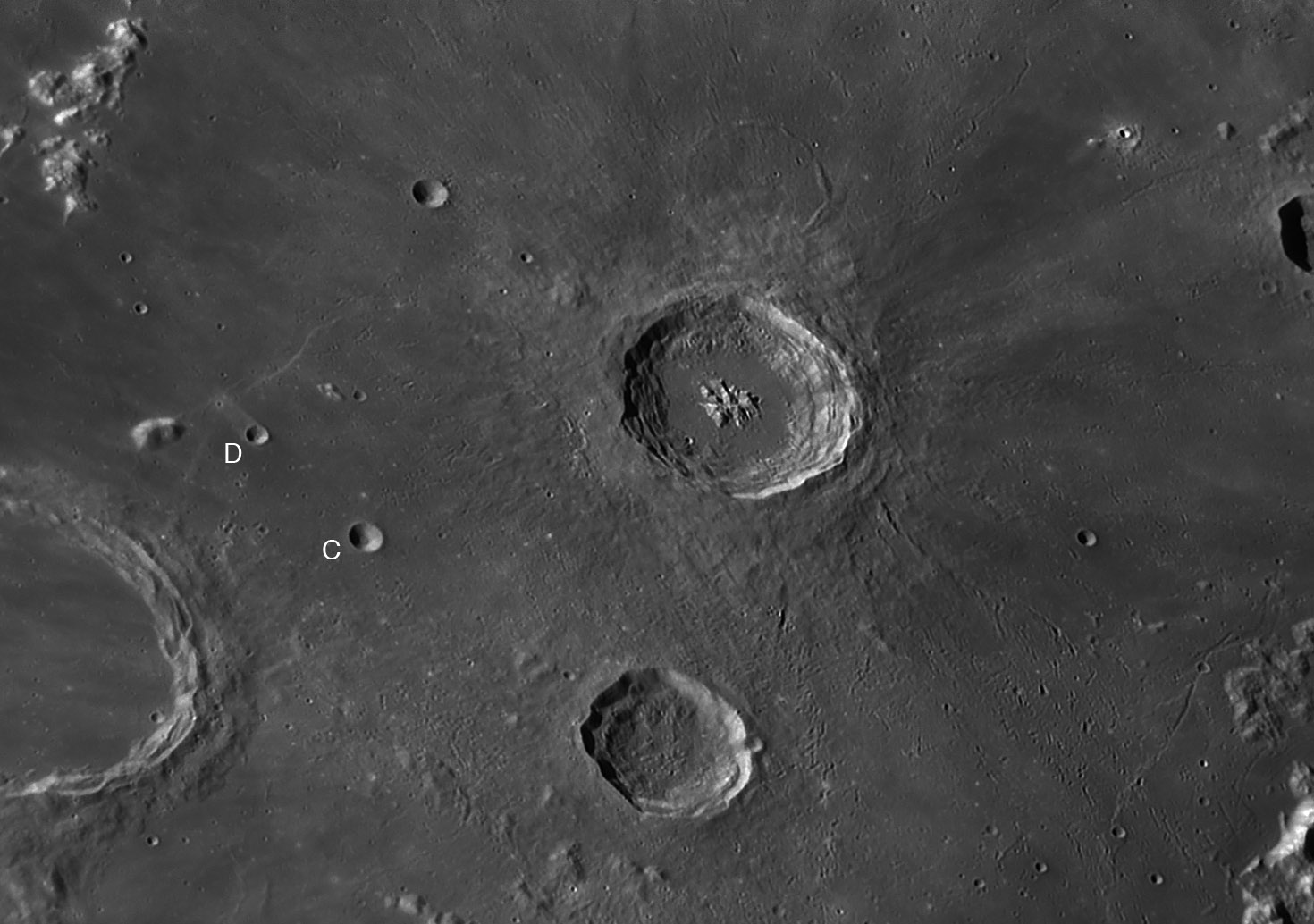
image by Wes Higgins
Each increase in resolution or better view with a different lighting seems to reveal new things about the Moon. Wes’ superb image of the area around the young crater Aristillus reveals more about the lunar surface and raises more questions. The radiating rays and secondary crater alignments from Aristillus are clearly shown, as is the ruined crater to the north. This Wallace-like crater (#10518 in the System of Lunar Craters) was flooded by Imbrium lavas and then dumped on by Aristillus ejecta. Also notice the dark streamer on Aristillus’ east wall. There is nothing in Wes’ image to dissuade me from my earlier interpretation that the streamer starts at the bottom terrace, fanning into two streaks upslope, and one broadening streak towards the floor. This is hard to understand and I’ll avoid saying that a low oblique impact into a melt pond on the terrace could conceivably account for this dark ray pattern. Another strange surface feature that apparently hasn’t been commented on before is the short, bright and wide streak on the northwest side of Archimedes D. This is similar to streaks of windblown material caught in an eddy behind obstacles on Mars. But such features are uncommon on the Moon. The Archimedes D swath (a word to distinguish it from normal narrow and long rays) is not quite radial to Autolycus, which has a very faint ray pattern, nor to any other obvious large ray crater. The swath is radial to the nearby small crater Archimedes C, but it does not look like C and D are a less conspicuous version of the oddly-rayed oblique impact pair Messier and Messier A. This newly noticed swath is an enigma.
Technical Details:
August 03, 2007. 18″ Reflector, Infinity 2-1m camera, stack of 490 frames, MAP-26.
Related Links:
Rükl plate 12
Yesterday's LPOD: The Moon on Your Table
Tomorrow's LPOD: An Imbrium Ray?
COMMENTS?
Register, Log in, and join in the comments.



